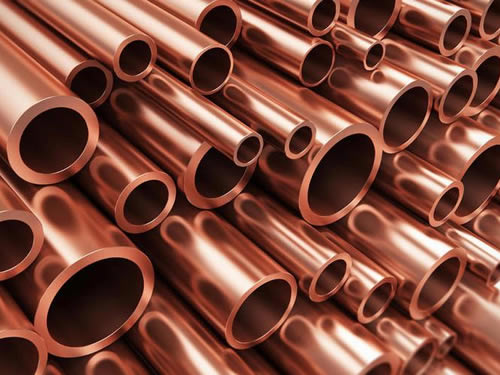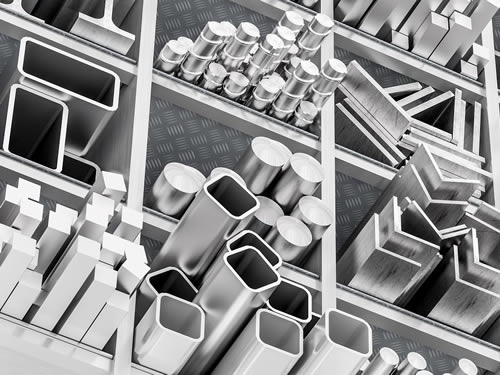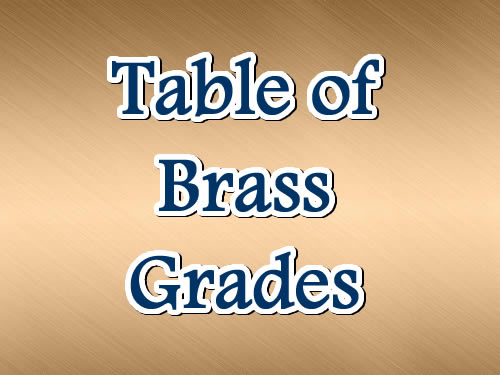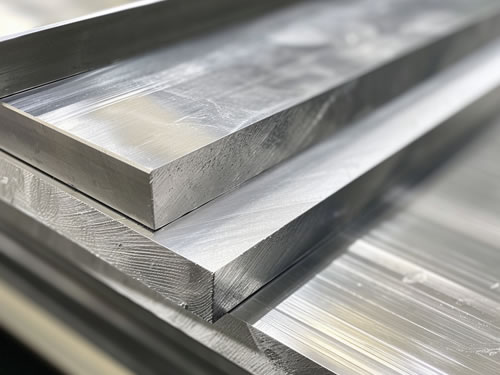In metalworking applications, pure copper and brass stand as the primary copper variants. Their distinct properties - especially when formed into plates, rods, or tubing - directly impact performance in electrical, mechanical, and architectural uses. Understanding these material differences enables smarter selection for both industrial and creative projects.

I. Core Lineage: Definition and Fundamental Differences
Red Copper (T1, T2, T3, TU1, TU2...):
Essentially very high-purity copper (≥99.5%), commonly known as pure copper, red copper, or purple copper.
Key identifiers: Distinctive orange-red hue, excellent electrical/thermal conductivity, good plasticity and ductility.
Brass (H59, H62, H65, H68, H70, HPb59-1...):
Essentially a copper-zinc alloy, with copper (Cu) as the base and zinc (Zn) as the main additive (typically 5%-45%).
Key identifiers: Golden yellow hue (color shifts from red-gold to pale yellow with increasing zinc content), generally offers better strength/hardness/wear resistance than red copper, but lower electrical/thermal conductivity.
Important Variant: Free-cutting brass (e.g., HPb59-1), which contains small amounts of lead (Pb) to significantly enhance machinability.
II. Same Form Comparison: Detailed Differences in Plates, Rods, and Tubes
III. Application Fields: Plates, Rods, Tubes Fulfilling Distinct Roles
1. Plate Applications:
Red Copper Plate:
Conductive/Thermal components: Electrical switch contact arms, bus bars, heat sink base plates, HF electromagnetic shielding.
Architectural decoration: Copper cladding panels, relief sculptures, roofing (utilizing oxidation for antique effect).
Containers/Chemical: Brewing/distillation vessel liners (corrosion resistant), corrosion-resistant linings for chemical equipment.
Artistic craft: Intricate chasing, hammering and raising of copperware (utilizing ductility).
Brass Plate:
Decorative/Identification: Nameplates, luxury decorative panels, faux gold jewelry components.
Electrical/Hardware: Contact springs, connector bases (where higher strength is needed alongside conductivity).
Mechanical parts: Washers, bushings, valve components, wear plates (specific alloys).
Artistic processing: Etching plates (free-cutting brass yields fine lines easily).
2. Rod Applications:
Red Copper Rod:
Conductive/Thermal rods/columns: Grounding rods, electrode rods, vacuum device conductor posts, heat pipe wick rods.
Feedstock for secondary processing: Forged, cold-headed into complex conductive or sealing parts (rivets, contacts).
Crafts/Structural parts: Support rods, sculpture armatures requiring high formability/conductivity.
Brass Rod (Especially Free-Cutting):
"Raw material" for machining: One of the most widely used profiles; machined via turning, milling, drilling, CNC into precision shafts, gears, valve stems, plumbing fixture cores, nozzles, connectors, lock parts, musical instrument components. Stronger than red copper, high machining efficiency.
Structural/Connecting components: Architectural hardware hinges (pins), furniture decorative posts.
3. Tube Applications:
Red Copper Tube (Dominant Application):
HVAC Champion: Refrigeration/Air-conditioning tubing, cryogenic piping (higher spec seamless R410A copper tubes), high-efficiency heat exchanger tubes (condensers, evaporators).
Plumbing System Essential: Building water supply pipes, gas pipes, medical gas lines (pure, bacteriostatic, corrosion-resistant, ductile for easy joining).
Precision systems piping: Hydraulic/pneumatic lines, instrument capillary tubing, vacuum system pipes.
Brass Tube:
Plumbing/Fittings Role: Condenser tubes in heat exchangers (specific corrosion-resistant alloys), pipe fittings (elbows, couplings) (utilizes machinability/castability and corrosion resistance). Less common for main water lines than copper, considered less hygienic.
Special fluid transport: Oils, seawater (e.g., Naval brass), low-conductivity gas lines.
Structural/Decorative tubes: Furniture supports, railings, instrument bodies (e.g., saxophones), decorative conduit.
IV. Material Selection Guide: Key Considerations
Dominant Functional Requirement:
Prioritize Red Copper: When demanding extremely high electrical/thermal conductivity or plasticity/toughness (conductors, heat transfer tubes, deep-drawn parts, water pipes).
Prioritize Brass: When demanding high strength, hardness, wear resistance, or excellent machinability (precision valve cores, gears, bushings, hardware).
Cost & Efficiency Factors:
Raw material cost for red copper is typically higher than standard brass.
For mass machining of precision parts, free-cutting brass rod (HPb59-1) is the cost-efficient choice, saving tooling and time.
Where pure performance allows, brass can replace red copper for cost reduction (if conductivity/thermal transfer is not critical).
Corrosive Environment:
Red copper excels in clean water and atmospheric conditions.
Brass (especially Naval brass, aluminum brass) may perform better in seawater or specific acid/alkali environments.
Hygiene & Safety:
For potable water delivery, select red copper tube (very low lead content, meets standards).
Leaded brass is PROHIBITED for potable water contact parts (Pb leaching risk).
Aesthetic Requirements:
Choose Red Copper Plate for warm antique patina (green) or bare copper aesthetics.
Choose specific high-quality copper-nickel alloys or high-copper brasses like H65 for long-lasting bright gold/yellow brilliance.
Brass plate/rod is preferred as a substrate for plating/faux gold finishes (cost-effective).





